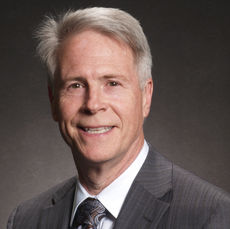top of page

FinaTech
Team
We Empower Through Innovation
FinaTech’s founders, Scott Smith and Jerry Verbeck, were some of the earliest pioneers in structured finance, architecting and originating the world's first mixed-property commercial mortgage-backed securities (CMBS) pool in1993. In 1990, Scott developed his first model for securitizing commercial real estate loans, inspired by Lewis Ranieri’s groundbreaking work in residential mortgage securitization.
Ranieri had pooled seasoned home loans originated by Savings & Loan institutions and used the now-classic A/B/C tranche structure to issue rated securities. These securities were made investment-grade by requiring originators to replace any delinquent loans with performing ones. Thus, all securitizations to that point were backed by third-party credit. Ginnie Mae bonds, for instance, carried a government guarantee, while the collateral in Ranieri’s pools was effectively guaranteed by the loan originators.
Scott’s goal, by contrast, was to develop commercial mortgage-backed securities that derived their credit strength from the underlying collateral and pool's structure itself—without reliance on any external guarantees.
In 1990, Jerry Verbeck was with Christian Mutual, where he architected structured models for the securitization of church mortgages. Collaborating with Kemper, Drexel Burnham, and the rating agency Duff & Phelps, he successfully originated and securitized three rated transactions.
Christian Mutual purchased the first-loss bonds, providing the necessary layer of credit enhancement to secure investment-grade ratings.

Drexel Burnham

Scott and Jerry joined forces in 1991 to form Manns Haggerskjold in Boulder, Colorado, where they developed a securitization structure designed to stand on its own—relying solely on cash reserves and unrated first-loss bonds.
Boulder, Colordo
At the time, Daiwa was attempting a similar approach but was unable to overcome the steep discounts applied to real estate–backed bonds at the time, even those carrying investment-grade ratings. Under Daiwa’s model, borrowers would have been required to pay more than five points in fees for loans carrying double-digit interest rates, rendering the structure economically unfeasible.
Scott refined his model by incorporating interest-only (IO) strips to resolve the yield problem, enabling loans to be originated for a single point while still providing the bonds with an additional 100 basis points of yield compared to similarly rated bonds.

Jerry developed a sensitivity model that was used by Standard & Poor’s, Duff & Phelps, as well as Daiwa, Nomura, and DLJ. The model demonstrated that the bonds could be split into a market-priced bond and an IO strip, with the present value of the IO strips generating a 5% profit—even when borrowers paid only a one-point origination fee.
The structure supported a 2% cash reserve and a first-loss bond yielding 34%, enabling DLJ to close the first stand-alone, mixed-property CMBS—followed by many more. Brown and Wood closed the loans for Manns Haggerskjold and Cadwalader, Wickersham & Taft served as counsel for the securities transaction.

DLJ - 1993
Scott and Jerry continued originating commercial mortgages for securitization throughout the 1990s and were joined in 2000 by Kevin Howard, who collaborated with them on modeling structures for high-performance computing. The team quickly expanded to include computer science pioneers Gene Amdahl and John Gustafson. Len Brooks joined after retiring from Goldman Sachs, and several affiliated business entities were formed alongside FinaTech, expanding the team to its present size. The team filed its first parallel processing patents in 2000, and its first structured finance patents in 2007.

Over the next two decades, the team successfully prosecuted more than 50 patents, almost a dozen of which protect the computational technologies fundamental to modeling and simulating the performance of structured private equity funds and REITs. These are often referred to as “black box” patents because they cover the core computational methods required to model and simulate complex systems—thereby extending protection across a wide range of potential applications and products.
The team’s technology has received multiple DARPA grants and is deployed by U.S. government agencies and leading technology firms. More recently, the team has advanced the field with agentic AI platforms for industrial and bio-industrial automation, and with TALPs—an innovative form of parallelization that dramatically improves computational efficiency and reduces data center power consumption.

At the core of the team’s work lies the fundamental challenge: how to accurately model and simulate highly complex systems with multiple time-dependent inputs and outputs. Put another way, the question is how a computer—limited to algorithmic processes—can effectively perform calculus.
Our Team
bottom of page

















